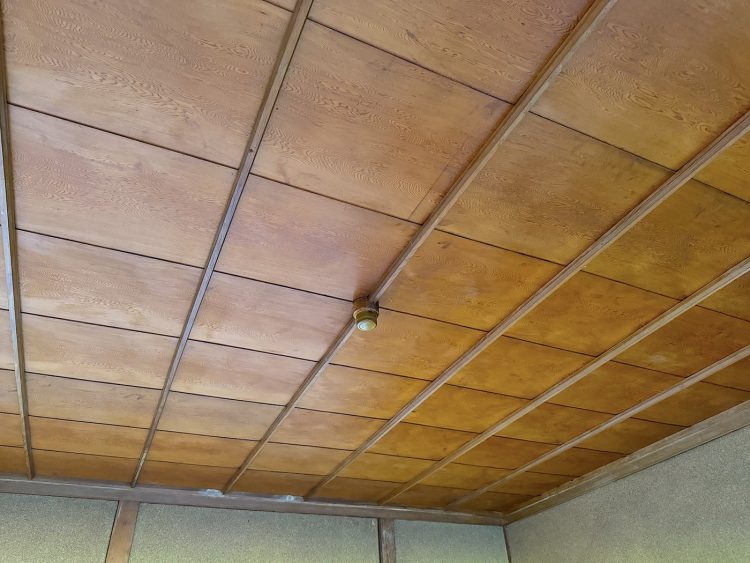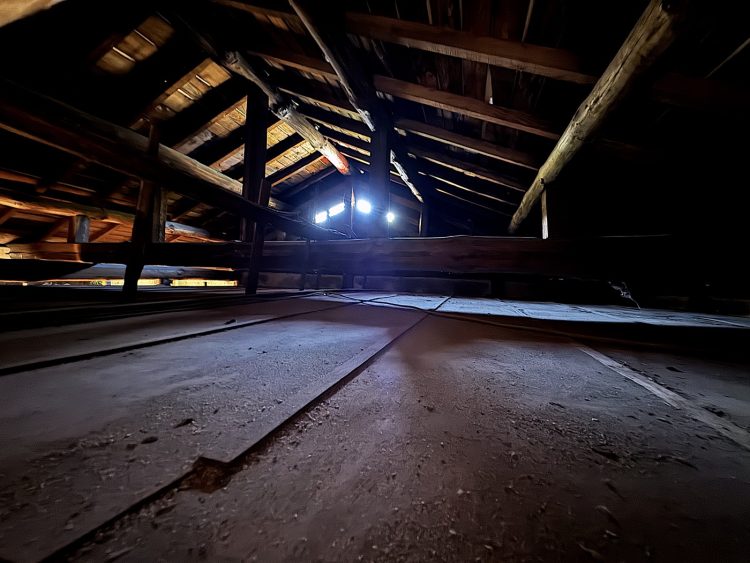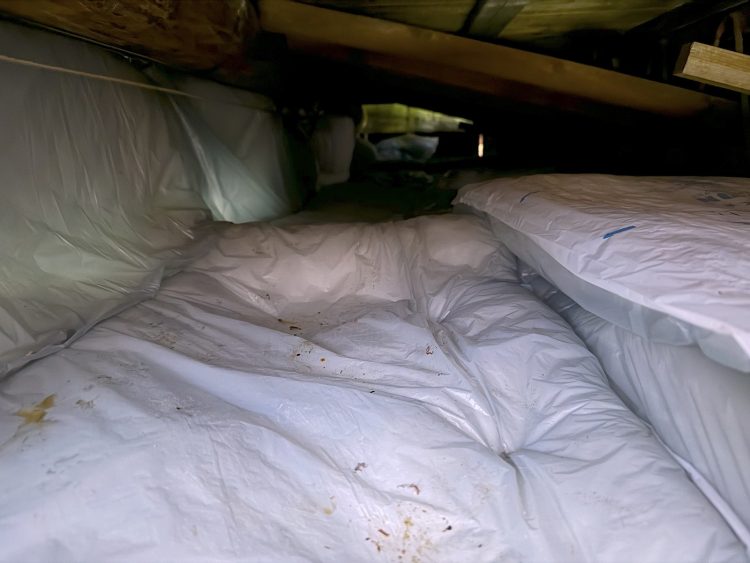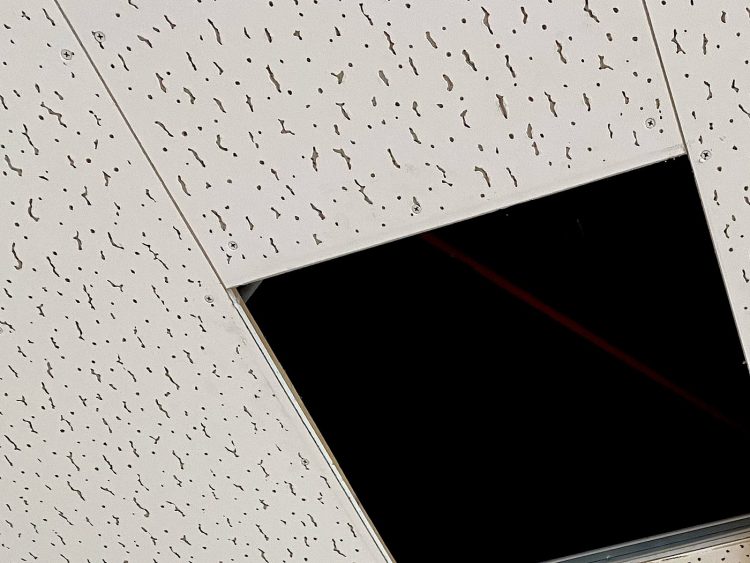Ceiling renovation
As I briefly mentioned in a previous article (Part 8: Demolition and renovation of Japanese houses 1), traditional Japanese-style rooms are no longer in high demand, and both the materials and skilled craftsmen needed to create them are becoming harder to find. So, if you’re renovating a traditional Japanese house and want to keep its original atmosphere, it’s best to preserve as much of the existing interior as possible during the renovation.
However, older homes were built for a different climate and lifestyle. Today, with global warming making summers hotter, air conditioning has become essential. For that reason, it’s a good idea to add insulation or make other upgrades when necessary.
For example, Sao-buchi ceilings―like the one shown in the photo below―are made by nailing thin wooden boards onto thin stick called a 竿縁: Sao-buchi. This design allows air to flow easily, but it also lets in drafts and dust from the attic. If you can access the attic, it’s worth cleaning out any dust above the ceiling and laying down insulation such as glass wool to improve the room’s temperature control. In old Japanese houses, a part of the ceiling panel of an Oshi-ire (Japanese-style closet) is not fixed but movable, and it is often possible to enter the ceiling from there. If you’re not particular about preserving the traditional ceiling style―or if you can’t reach the attic―re-paneling the ceiling is often a practical alternative.
In homes located near mountains or forests, insects like centipedes can sometimes fall through gaps in the ceiling. Because of this, many modern Japanese people prefer rooms that are tightly sealed, with wallpaper covering the walls from floor to ceiling (In the past, Japanese people used mesh tents called 蚊帳: Kaya over their bedding while they slept to keep insects away).

Sao-buchi ceilings. If the thin wooden planks are carefully removed, it is possible to leave the Sao-buchi stick in place and reattach a new plank on top. Sao-buchi sticks are suspended from the beams at regular intervals using wire or wood to prevent the ceiling from sagging.

The attic of a Japanese house.
The ceiling falls down when you step on it, so if you want to move at the attic, get on the beam.

This photo shows footprints left by a cat walking across the insulation in the attic. Be aware that if there is an access point to the attic somewhere in the house, wild animals such as cats or raccoons may nest in the attic filled with insulation.
If the property you bought was already renovated by a previous owner, the traditional interior may have been replaced with plasterboard or thin plywood. In that case, you can feel free to remodel it however you like.
However, be cautious if the building was constructed or last renovated before September 2006, because it may contain asbestos. Asbestos was often used for insulation in concrete buildings from the 1950s to the 1990s, especially in attics where it was sprayed onto surfaces.
While sprayed asbestos is less common in wooden houses, other asbestos-containing materials were sometimes used.
For instance, lightweight plasterboard ceilings like the one in the photo below are still commonly used in Japan today. Modern plasterboard is safe, but older versions may contain asbestos.
Asbestos was also used in sound-absorbing boards, exterior wall panels, cement materials, paints, and many other construction products. It’s impossible for a non-expert to tell by sight whether a material contains asbestos.
Even traditional wall finishes such as Juraku-style walls, sand walls, and fiber walls sometimes contained asbestos in the past. If the adhesive weakens and these materials start peeling off naturally, they can become a health risk. To find out if a material contains asbestos, you must send a sample to a certified laboratory for testing.
According to Japanese law, a qualified asbestos inspector must carry out a preliminary survey before any demolition or renovation work. If asbestos or asbestos-containing materials are found in a home, they can’t be safely disposed of by the homeowner―professional removal is required, and this can be quite expensive.
It’s important to note, though, that the most dangerous type of asbestos is the sprayed form, which easily becomes airborne. Asbestos that’s sealed within solid materials like plasterboard, exterior wall panels, cement, or paint doesn’t usually release fibers under normal conditions.
So, just because a home contains asbestos-based materials doesn’t necessarily mean it’s unsafe to live in.
However, cutting, breaking, or sanding asbestos materials can release harmful fibers into the air.
Ordinary dust masks cannot block these microscopic particles, which can reach deep into the lungs. So, if you plan to do minor DIY work, always consider the possibility that your building materials might contain asbestos, and avoid breaking or cutting them unnecessarily.
Finally, don’t worry about areas made of natural wood―they do not contain asbestos, so you can safely proceed with your DIY projects there.

 日本語
日本語 English
English

